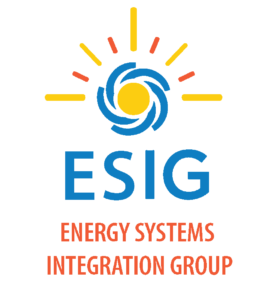A New Approach to Resource Adequacy Analysis Will Help Ensure the Right Generation Resources for a Reliable High-Renewables Grid
Reston, Va. – The Energy Systems Integration Group has released a new report, Redefining Resource Adequacy for Modern Power Systems, offering six principles for the redesign of resource adequacy analysis—a central element of long-term reliability planning—to ensure that tomorrow’s power systems have the right resources to reliably serve load.
“With the changing generation mix, the resource adequacy methods of the past are no longer adequate for the needs of the future,” said Charlie Smith, executive director of the Energy Systems Integration Group. He noted that, going forward, the industry will need to “look in a holistic fashion at the contributions of generation, transmission, and distributed resources, including demand” to grid reliability.
Historically, to reliably serve residential, commercial, and industrial electricity demand meant having enough power plant capacity to serve the peak load—typically occurring on hot summer afternoons. However, periods of risk of a shortfall are changing as a result of the expansive growth in variable power generation—wind, solar, and batteries—and increasingly flexible loads. To reliably balance supply and demand on our future high-renewables grid, power system planners will need to analyze system needs not just during periods of peak load but over the course of a year. They will need to do long-term resource planning that includes not only renewables, batteries, and some conventional generation, but also dynamic loads as well as transmission, allowing the sharing of electricity with neighboring grids.
For tomorrow’s grid, “reliability is strongly affected by chronological operations and weather-influenced correlated events,” said Derek Stenclik, co-founder of Telos Energy and an author of the report. “The two factors of correlation and chronology are important drivers requiring the industry to modernize frameworks for resource adequacy analysis. The peak load hour may no longer be the riskiest, as the supply mix and generator availability vary continuously. We, as an industry, need to evaluate across an entire year, specifically identifying key risks of correlated events associated with weather and fuel supply.” An extreme cold event, for example, can simultaneously cause a spike in home heating loads, disable natural gas delivery infrastructure, cause icing on wind turbines, and freeze coal piles solid.
The report Redefining Resource Adequacy for Modern Power Systems outlines six principles for use by system planners, regulators, and others as they bring their analytical methods in line with the realities of tomorrow’s grid. The six principles outline new needs to understand various types of reliability failures, bring new perspectives on different resources’ contributions to grid reliability, and call for the inclusion of economic considerations in reliability analyses—to provide grid planners and regulators with a clear understanding of the costs associated with meeting different reliability targets in different ways.
The Energy Systems Integration Group is a nonprofit organization that marshals the expertise of the electricity industry’s technical community to support grid transformation and energy systems integration and operation, particularly with respect to clean energy.
Click here to download the full report.
For more information on ESIG, visit www.esig.energy.
###
Media Contact:
Ryan Willis, ESIG Director of Marketing & Operations
(704) 473-0135

Leave a Reply